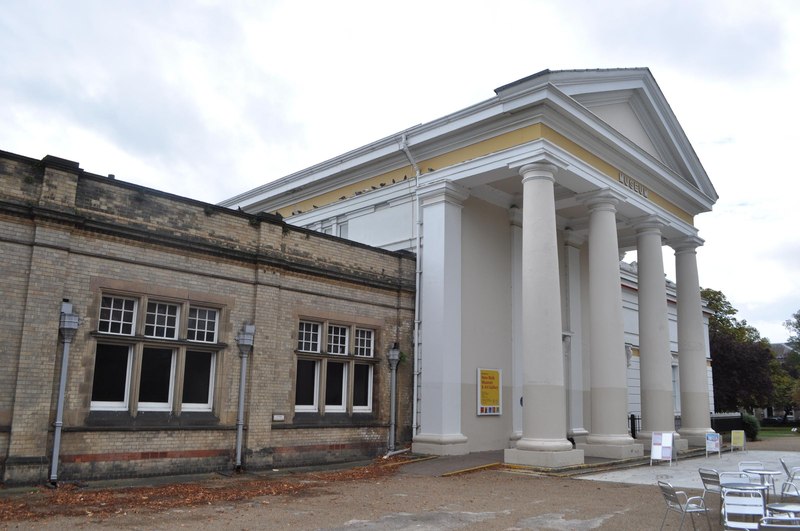
Case Study: Relabeling in Leicester (United Kingdom)
In the year 2018, a remarkable event unfolded at the New Walk Museum in Leicester, UK. Two captivating museum takeovers were orchestrated, wherein refugees and asylum seekers played a pivotal role in reimagining the labels of the museum’s permanent collection, if only for a temporary period. The driving force behind these transformative endeavors consisted primarily of the refugees and asylum seekers who frequented creative writing classes hosted by City of Sanctuary. Assisting them were a devoted creative writing instructor and the esteemed Outreach Officer from the New Walk Museum. Through their collective efforts, the once-lifeless and detached objects found a newfound vitality as engrossing stories were interwoven with them. The profound impact of these narratives was deeply cherished by both the intended audience and fellow museum-goers.
Organization
Situated on New Walk in Leicester, England, the New Walk Museum and Art Gallery, now known as The Leicester Museum & Art Gallery since 2020, stands in close proximity to the city center. As one of the pioneering public museums in the United Kingdom, it opened its doors in 1849. This esteemed institution showcases an array of captivating exhibits spanning the realms of science, history, and art, encompassing both international treasures and local gems.
During a meeting focused on the planning of Refugee Week events in Leicester, an intriguing proposition was presented to a group of immigrants. They were asked if they wished to engage with the objects housed within the New Walk Museum. It quickly became apparent that many among them had never experienced the museum firsthand. Upon their initial visit, the World Arts gallery emerged as a focal point, showcasing an assortment of objects from various corners of the globe, including some originating from their own native lands. A surge of curiosity swept through the group, provoking a spectrum of emotions ranging from excitement to deep sentiment. In that transformative moment, they found themselves in direct contact with artifacts that had previously felt distant and unfamiliar.
Case Description
The process of crafting the labels unfolded as follows: each individual selected an object from the museum’s collection. The refugees took the reins in composing the labels, with no external editing, but they received guidance from an experienced writing teacher. The teacher aided them in transforming their oral narratives into written words and sentences, addressing any English language challenges along the way. Given the varying proficiency levels in English within the group, all participants were encouraged to contribute, and translators occasionally lent their support. Subsequent editing of the labels did not take place. As a result of these collaborative writing sessions, the first edition comprised fifteen labels, and the second edition included an additional ten.
The stories shared by the refugees were deeply personal in nature. Cloud from Zimbabwe recounted his emotional connection to a spoon that evoked memories of his mother’s cooking, even requesting to have his mother’s photograph displayed alongside the label. Rosemary from Nigeria expressed disagreement with the interpretation of a textile from her country of origin and penned a fresh perspective on the object. Four men from Eritrea reflected on their arduous journey through the Sudanese desert and wistfully contemplated the use of a Chinese horse within their narratives.
By distorting stories through storytelling, a powerful act was unleashed. The men and women who authored these labels enriched the museum’s diverse collection by infusing it with their unique knowledge and experiences. They deftly disrupted the gallery space in a positive and indispensable manner, breathing new life into the artifacts and imbuing them with fresh significance. Their voices reverberated through the institution, effectively transforming it into a museum of the 21st century.
In the same year, a second edition of the relabeling project coincided with the Journeys Festival International, a celebration of the contributions made by refugee artists. This iteration showcased 25 labels within the museum, accompanied by five panels that explored the project’s essence and questioned the role of museums in the modern era. Additionally, one panel showcased a poignant poem on the refugee experience, collaboratively composed by the group during a previous creative writing course.
Impact
The endeavors undertaken served as a catalyst for a profound discourse on the role of museums as institutions and the inclusion of refugees, asylum seekers, and marginalized communities in the modern era. Several project participants were present at the museum on both occasions, engaging in informal conversations within the halls, sharing insights about their respective labels. The impact of the experience on the participants has been overwhelmingly positive, with one individual remarking that it was life-changing to see their labels proudly displayed within the museum. Another participant expressed awe at the unexpected opportunity of being present in a museum, a notion that had previously seemed unimaginable.
The response from the public has been equally uplifting, with a multitude of visitors commending this initiative as a brilliant means of keeping museums connected to the community. A visitor lauded the powerful and engaging nature of the labels, acknowledging their ability to establish connections between the exhibited objects and contemporary lives. Another visitor expressed a desire for institutions to recognize the inherent value and potential of such projects, emphasizing that they should not be fleeting endeavors, but rather sustained and integrated into museum practices.
What was learned?
Alongside the numerous positive responses, there were also valid concerns raised by the audience regarding the co-production aspect of the project. One individual inquired, “Were the participants compensated for their involvement?” and further questioned, “How were they supported throughout this process? What benefits did they receive in return?” These questions shed light on the inherent limitations of museum collaborations with marginalized communities. While these two acquisitions of new labels provided an exceptional opportunity for interaction between the participants and the museum’s objects, enabling them to share their stories with the public, the transient nature of these events prompts a crucial question: What comes next?
References
Author
Bob Crezee, Quiosq (NL)
Header image: Ashley Dace at Wikimedia Commons, CC-BY SA 4.0.


